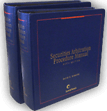On April 6, 2016, the same day the U.S. Department of Labor issued its new fiduciary rule, the White House set forth the reasons for and implications of it, including the following:
“Middle Class Economics: Strengthening Retirement Security by Cracking Down on Conflicts of Interest in Retirement Savings”
- Reason for the Rule – Conflicts of Interest in Retirement Advice Cost Savers Billions of Dollars – “While many investment advisers acted in their customers’ best interest, not everyone was legally obligated to do so. Instead, the broken regulatory system had allowed misaligned incentives to steer customers into investments that have higher fees or lower returns-costing some middle-class families tens of thousands of dollars of their retirement savings.”
- The President’s Council of Economic Advisers (“CEA”) found:
- Working and middle class families receiving conflicted advice (e.g., commissions) earn returns roughly 1% point lower each year (for example, conflicted advice reduces what would be a 6% annual return to a 5% return).
An estimated $1.7 trillion of IRA assets were invested in products that generally provide payments that generate conflicts of interest. Thus, CEA estimated that the aggregate annual cost of conflicted advice is about $17 billion each year.
Highlights of the New Rule
- Who is a Fiduciary? “Under the rule, any individual receiving compensation for making investment recommendations that are individualized or specifically directed to a particular plan sponsor running a retirement plan (e.g., an employer with a retirement plan), plan participant, or IRA owner for consideration in making a retirement investment decision is a fiduciary.”
-
Fiduciary Obligations – “Being a fiduciary means that the adviser must provide impartial advice in their client’s best interest and cannot accept any payments creating conflicts of interest unless they qualify for an exemption intended to assure that the customer’s interests are protected. This change expands protections to IRA owners and people rolling over their savings into an IRA from a 401(k), who now must receive investment advice in their best interest.”
-
The Exemptions – Will allow firms to accept common types of compensation – like commissions and revenue sharing payments – if they commit to putting their client’s best interest first. Under the best interest contract (BIC) exemption, firms (and their individual advisers) can continue to receive most common forms of compensation for advice to retail customers and small plan sponsors to invest in any asset so long as the firms:
- Commit the firm and adviser to providing advice in the client’s best interest, charge only reasonable compensation, and avoid misleading statements about fees and conflicts of interest.
- Adopt policies and procedures designed to ensure that advisers provide best interest advice, and prohibiting financial incentives for advisers to act contrary to the client’s best interest.
- Disclose conflicts of interest. The firm must direct the customer to a webpage disclosing the firm’s compensation arrangements and make customers aware of their right to complete information on the fees charged.
Department Of Labor Finalizes Rule To Address Conflicts Of Interest In Retirement Advice, Saving Middle-Class Families Billions Of Dollars Every Year
What Is Covered Investment Advice Under the Rule?
Covered investment advice is defined as a recommendation to a plan, plan fiduciary, plan participant and beneficiary and IRA owner for a fee or other compensation, direct or indirect, as to the advisability of buying, holding, selling or exchanging securities or other investment property, including recommendations as to the investment of securities or other property after the securities or other property are rolled over or distributed from a plan or IRA.
Covered investment advice also includes recommendations as to the management of securities or other investment property, including, among other things, recommendations on:
- investment policies or strategies,
- portfolio composition,
- selection of other persons to provide investment advice or investment management services,
- selection of investment account arrangements (e.g., brokerage versus advisory); or,
- recommendations with respect to rollovers, transfers, or distributions from a plan or IRA, including whether, in what amount, in what form, and to what destination such a rollover, transfer, or distribution should be made.
Under the rule, the fundamental threshold element in establishing the existence of fiduciary investment advice is whether a “recommendation” occurred.
- A “recommendation” is a communication that, based on its content, context, and presentation, would reasonably be viewed as a suggestion that the advice recipient engage in or refrain from taking a particular course of action.
- The more individually tailored the communication is to a specific advice recipient or recipients, the more likely the communication will be viewed as a recommendation.
The recommendation must be provided in exchange for a “fee or other compensation.”


